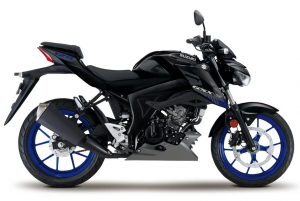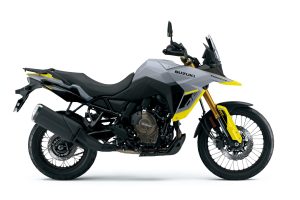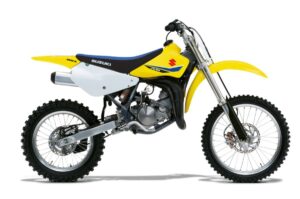Description
The Hayabusa, Suzuki Motor Corporation’s flagship motorcycle, celebrates its 25th anniversary in 2023. In commemoration, Suzuki introduces the 25th anniversary model.
Currently, the Hayabusa is sold in 48 countries worldwide, including the United States, Europe, India, and Latin America, with cumulative series production of over 200,000 units.
- 1998 Unveiled at Intermot, Germany as the “Hayabusa (GSX1300R)”
- 1999 Started sales
- 2007 Started sales of second generation
- 2014 Started sales of Japan specification
- 2016 Started production and sales in India
- 2021 Started sales of third generation
- 2022 Achieved accumulated production of 200,000 units
ELECTRONICS
The new Hayabusa adopts the latest version of Suzuki’s Intelligent Ride System (S.I.R.S) a robust collection of electronic systems designed to optimise performance characteristics to match the needs of the moment and make the motorcycle more controllable and predictable. Riders can opt for settings that best suit riding conditions and varying road surfaces as well as their level of confidence and experience. They can benefit from the feedback those settings provide and take advantage of it to further hone their riding skills and gain greater confidence as they enjoy the ultimate riding experience. Countless hours of repeated track testing, analysis and revisions to the programming for each setting aimed to achieve optimal performance in every conceivable situation and to ensure the reliability of each system.

SDMS-α
Suzuki Drive Mode Selector Alpha (SDMS-α) groups together five advanced electronic control systems while enabling riders to select individual settings for each. It optimises performance characteristics and behaviour to best suit varying road surfaces, riding conditions and preferred riding styles.
Experiment with the different settings and benefit from the feedback each offers to hone your riding skills and build greater confidence while enjoying the ultimate riding experience.
In addition to three factory presets, (A, B, C), SDMS-α offers a choice between three user-defined groups of settings (U1, U2, U3). 

BOSCH 6-Axis IMU
Combines accelerometers and gyroscopes in a single compact package that constantly monitors pitch (forward or backward tilt), roll (leaning from side to side), and yaw (turning in relation to initial direction). These measurements are compared against one another as well as readings from wheel speed sensors to keep the motorcycle aware of its situation at all times and provides input for several S.I.R.S. controls.
Motion Track Traction Control
Takes ‘TC’ to a whole new level by employing data from the IMU to constantly monitor the amount of lean angle and effectively limit slip in corners as well as on straightaways. It provides greater stability at all times, enabling confident control in varying riding conditions while reducing stress and fatigue. The system offers a choice of 10 mode settings, and it can be turned off when preferred. The higher number the mode, the faster traction control is engaged and the more proactive the system is in limiting wheel spin.
-
Launch Control
A selection of three mode settings lets the user match the engine speed at launch to their level of experience or confidence. Mode 1 limits engine speed on launch to 4,000 rpm, Mode 2 operates at 6,000 rpm, and Mode 3 — the fastest mode — operates at 8,000 rpm for the most aggressive take-off
-
Anti-Lift Control
Suzuki has successfully developed an advanced system that maximises acceleration performance whilst preventing front wheel lift. Offering a choice of 10 modes when turned on, with Mode 1 providing minimal control and Mode 10 making it virtually impossible to lift the front wheel, even when fully opening the throttle with a passenger on the back.
-
Engine Braking Control
This system cancels out the effect of engine braking to suppress rear tyre sliding or skipping and provide even smoother, more controllable behaviour than ever before. A choice of three modes plus an OFF setting allows the rider to control the effective strength of engine braking to match riding conditions or user preference.
-
Bi-Directional Quick Shifter
Provides the ability to shift gears up or down quickly without the need to operate the clutch or throttle. Offering two modes, Mode 1 reacts more quickly to replicate racing-style response, while Mode 2 offers a lighter touch.

Power Mode Selector
Riders can select between three different engine output modes that control power delivery to match road and riding conditions.
Mode 1: provides the sharpest throttle response and delivers maximum power. It’s a solid choice for the experienced rider out for a spirited run.
Mode 2: provides softer throttle response and more linear power delivery. That makes it practical for everyday riding.
Mode 3: provides the softest throttle response and features a more gentle power curve with reduced maximum output. It’s well suited to riding on wet or slippery roads.
-
Cruise Control
Reduces fatigue on long rides by allowing the user to maintain a set speed without operating the throttle. The speed can be easily adjusted upward or downward using the mode/set switch on the left handlebar and set from 31km/h to 200km/h while riding at 2,000 to 7,000 rpm in second gear or higher. The handy resume function re-engages the system and accelerates to the most recent speed setting after braking.
-
Active Speed Limiter
This system lets the rider set a maximum speed they do not wish to exceed and provides the ability to accelerate and decelerate as much as they please within that maximum set speed. This helps lessen worries about the bike exceeding a chosen speed limit.
-
Emergency Stop Signal
Another first on a motorcycle in Suzuki, is the Emergency Stop Signal function that rapidly flashes the front and rear indicators to alert following vehicles if the brakes are activated suddenly at speeds of 55 km/h or higher.
-
Hill Hold Control
Is designed to automatically engage the rear brake for 30 seconds after coming to a stop while facing uphill on an incline, even when the brake lever or pedal have been released. This helps ensure a smoother restart, free of worries that the bike will roll backward. The system is disengaged either by quickly squeezing the front brake lever twice, or by accelerating to pull away from a standing start.
ENGINE
Refinements implemented throughout the Hayabusa’s legendary 1,340cm3 liquid-cooled inline-four engine achieve an even better balance of overall performance, yet greater efficiency and durability, while also satisfying Euro 5 emissions standards. Inheriting the proud legacy of the Ultimate Sport Bike that originally established the category, the Hayabusa’s engine is built to deliver the ultimate riding experience for the long run.
Legendary power and reliability
Although the Hayabusa engine is already renowned for its reliability, durability and longevity, the development team was committed to further evolving it to a higher level.
The result of the engineering changes (highlighted in yellow) is better torque and power delivery with a more linear power curve in the low-to-mid speed range, which is where riders ultimately spend most of their time.
The new Hayabusa proudly carries on the legacy of the previous generations by providing riders with greater output and smoother torque than any other sports bike at engine speeds up to 6,000 rpm.
The Gen III is also the fastest-accelerating Hayabusa yet, boasting quicker 0-100km/h and 0-200m times than the previous iterations.
 Forged Pistons
Forged Pistons
While the Hayabusa continues to employ forged pistons with chrome nitride PVD coated oil control rings, it now adopts a new piston shape that has been optimised to match the new TSCC shape. Changes to the crankshaft oil passages increases the flow of the piston cooling oil jets, which in turn cool the pistons more efficiently. Advances in CAE analysis made it possible to remove enough material to reduce the weight of each piston by 26 grams. This reduces internal vibration, which in turn contributes to enhanced durability.
 Revised Cam Profile
Revised Cam Profile
While the proven lightweight titanium valves are carried over from the previous generation, the new Hayabusa adopts a revised cam profile that reduces valve lift overlap to improve performance and controllability at the most commonly used low and mid range speeds. Improving emissions performance and reducing the action angle places added load on the slipper surface, so the width of the cam lobes was increased to achieve even greater durability.

Suzuki Twin Swirl Combustion Chamber (TSCC)
Suzuki’s newest TSCC design promotes faster and more efficient burning of the fuel air mixture. It employs a four valve design with each pair of intake and exhaust valves positioned in adjoining semi hemispherical depressions. During the intake stroke, these depressions channel the incoming air fuel mixture into two controlled high speed swirls. Squish areas in the front and back of the chamber accelerate the speed of the swirls, igniting the mixture more quickly and effectively. After closely examining and analysing the flow of air as it entered the chamber to further leverage the inherent strengths of the TSCC design, the combustion chamber around the intake valve was machined further on the new Hayabusa engine. This expands the valve curtain area and improves the flow coefficient by 5% as the valve begins to open and reaches 5mm in lift height. As a result, this change increases combustion efficiency and helps satisfy Euro 5 emissions standards.


CHASSIS
The Hayabusa’s chassis is designed to empower the rider with sure footing, nimble handling and predictable control that inspires confidence and enhances the riding experience. It delivers a smooth and comfortable ride that absorbs everything the road surface throws at it and responds faithfully to the rider’s will. It effectively transfers the power of its legendary powerplant to the pavement while fully leveraging its intelligent control systems to run and brake effectively, whether riding straight or leaning through corners.
The Hayabusa’s tried and true twin spar aluminium frame and swingarm incorporate aluminium castings along with extruded aluminium sections that lend the right amount of suppleness and strength to its overall rigid alloy frame structure. While more costly and demanding to fabricate, extruded aluminium sections pay off in achieving the optimal overall balance required by a machine that delivers ultimate performance and reaches a top speed of 299km/h. This is why extruded aluminium can also be found used on a number of supercar frames, and why the Hayabusa also leverages its benefits.
The new sub frame designed in conjunction with the bike’s styling changes features straighter pipe sections and reduces weight by 700 grams.

Updated KYB Suspension
Both front and rear suspension settings have been optimised to eliminate any hint of oversteer at lower speeds and achieve a stable ride with neutral feel at all speeds. These combined with the low centre of gravity, long wheelbase and new tyres result in nimble handling along with reassuring straight line stability at highway speeds.
Up front is an updated version of the previous model’s fully adjustable KYB inverted forks with 43mm outer diameter diamond-like coating (DLC) coated inner tubes. The internal structure has been revised to further improve the forks’ ability to absorb the road surface and ensure a smoother, more stable ride with optimum grip. In similar fashion, the internal structure of the fully adjustable KYB rear shock absorber has also been updated to help optimise comfort and straight line stability.
Revised Rider Triangle
Mounting the handlebars 12mm closer to the rider vastly improves comfort and reduces fatigue, particularly when touring or taking other long rides It also enhances handling when enjoying a sporty ride by giving the rider better feedback on how well the front tire is gripping the road, by better supporting the rider’s posture to improve stability when braking, and by offering the rider greater freedom in movement to control cornering.

Brembo Stylema® front brake calipers
Featuring a lighter, more compact and carefully sculpted design, these new calipers increase airflow around the brake pads assisting them to cool more quickly and deliver immediate response. The diameter of the front discs has been increased from 310mm to 320mm and a new hole pattern is adopted to further help optimise cooling efficiency.
Motion Track Brake System
Motion Track Brake system combines vehicle posture data from the IMU with front and rear wheel speed sensor data to allow ABS activation not only in a straight line but also when leaning into a corner. The bike is therefore less likely to try to push itself upright or lose traction, instead maintaining its radius and lean angle to better trace your intended line through the corner.
Braking confidence is further enhanced via the Combined Braking System which provides braking power to the both front and rear brakes when operating the front brake lever.
STYLING
The Hayabusa’s vertically stacked headlight continues to feature intentionally large and, bold styling. Even so, the design for the new generation assumes a tighter, more angular look that nests neatly between the large Suzuki Ram Air Direct (SRAD) intake ducts and melds seamlessly with the narrower lines of the windscreen’s lower edge. Black parts incorporated inside its housing add a striking new touch and make the assembly less conspicuous. Flanking the air intakes are new position lights with integrated indicators. Together they form a single, clean vertical line that flows back along the cowling and does away with the bulbous protrusions as featured on previous iteration.
The English “Hayabusa” and Japanese Kanji logo designs have been updated to strongly evoke an image of speed and sophistication. Both logos adopt sharper, more highly stylised strokes, and the English logo features a long cross stroke on the “H” that emphasises a sense of speed.
In addition to the bold character on the side of the cowling, smaller versions of the Japanese logo add highlights on the black shroud over the projector type high beam headlight, on the front of the single seat cowl, and even as a start-up animation on the TFT LCD panel. Groupings of V-shaped accents inspired by the peregrine falcon’s hackles (neck feathers) are featured on the black cladding below the fuel tank, in front of the air intakes on the cowling, and on the foot pegs.




Aggressive Stance
Great effort was devoted to designing thinner, more compact mufflers that draw a straight line sweeping up from the exhaust pipes.
This not only makes the rear end look lighter, its also helps portray a forward-focussed image. A sharp new upswept tail design further emphasises the Hayabusa’s aggressive stance and eagerness to perform.
INSTRUMENTS & LIGHTING
Riders love the outstanding functionality and familiar layout of the Hayabusa’s instantly recognisable instrument cluster. Now it benefits from a number of carefully considered touches that give it a modern new look and make its functional brilliance shine even brighter.
The large analogue tachometer and speedometer gain a fresh, more attractive appearance. Features include bigger, bolder numbering that improves readability. Raised scale markings around the periphery of each meter use LED lighting to provide a clearer view and faster recognition, both at during the day and at night. Carrying the theme of gold coloured accents throughout the cockpit area, the analogue fuel and coolant temperature gauges that flank the meters are ringed in gold, as are the SDMS and Active Data display screens on the TFT LCD panel.

TFT LCD Panel with Active Data Display
One standout new feature is the TFT LCD panel mounted in the centre, between the two main meters. It displays either the current SDMS-α systems settings or an Active Data display that shows lean angle (with peak hold function), front and rear brake pressure, rate of forward/reverse acceleration, and the current accelerator position. The panel also shows clock, gear position, odometer dual trip meter, ambient temperature, instantaneous fuel consumption, riding range, trip time, and average fuel consumption on and voltmeter displays. An ambient light sensor automatically adjusts the instrument cluster’s brightness level based on surrounding conditions, but the rider can also opt to make manual adjustments.
An additional feature of the LCD panel is a brief animation of the Hayabusa kanji character that plays when the ignition key is turned on. This playful presentation is pleasing to the eye and heightens anticipation of the ride to come. A second animation featuring the Suzuki logo plays before the display is turned off.

Multi-LED Headlight
Both the low beam and projector type high beam headlights adopt LEDs that provide clear illumination and help make the Hayabusa clearly visible to pedestrians and other traffic at night. The vertically stacked design creates a sharp new look with its large, bold styling and eye pleasing presence.
Attention to achieving a memorable look extends to every detail. The two upper and two lower LEDs for the low beam are mounted in the corners where they shine across a reflector panel and fill the light assembly with attractive illumination.
Fine touches throughout the headlight assembly include the use of black parts that heighten the sharp looks, as well as the inclusion of the Hayabusa kanji character on top of the black cowl above the high beam lamp.
Integrated LED Indicators and Position Lights
A first on a Suzuki motorcycle is the integration of the LED position lights and indicators into single assemblies that neatly flank the outer edges of the large SRAD air intakes. An illumination scheme using white lighting for the position light with the indicators flashing in orange when they are on creates a unique overall effect that heightens the sense of a luxurious riding experience.

LED Rear Combination Lights
The bold new LED taillight and rear indicator design creates a single wide, sharp accent running horizontally across the bottom of the tail section.
Each of the left and right combination lamps house the tail/brake light and indicators, with a clear lens over the taillight and a clear smoke lens over the indicator portion.
*Shown with optional Genuine Accessory Seat Cowl.
SPECS

-
DISPLACEMENT
1340cc
-
ENGINE
In-line four-cylinder, liquid-cooled, DOHC
-
TRANSMISSION
6-Speed constant mesh with back-torque-limiting clutch
-
FRONT SUSPENSION
43mm KYB inverted diamond-like coated (DLC) forks with adjustable compression and rebound damping and spring preload
-
REAR SUSPENSION
Link type, KYB shock with adjustable compression and rebound damping and spring preload.

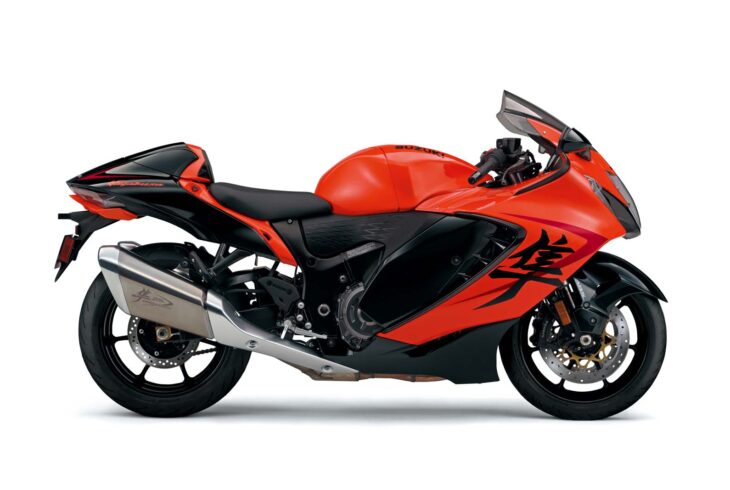
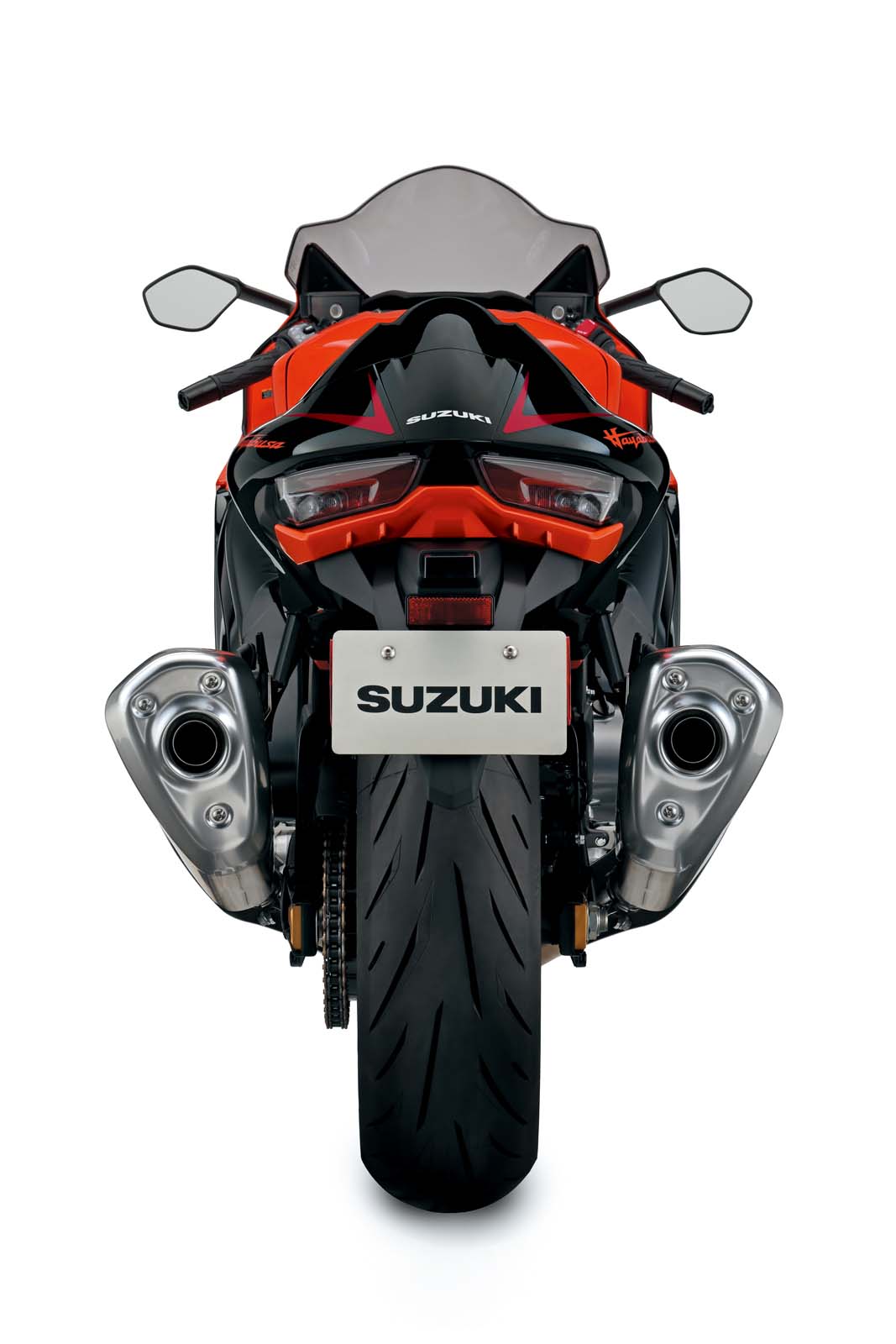
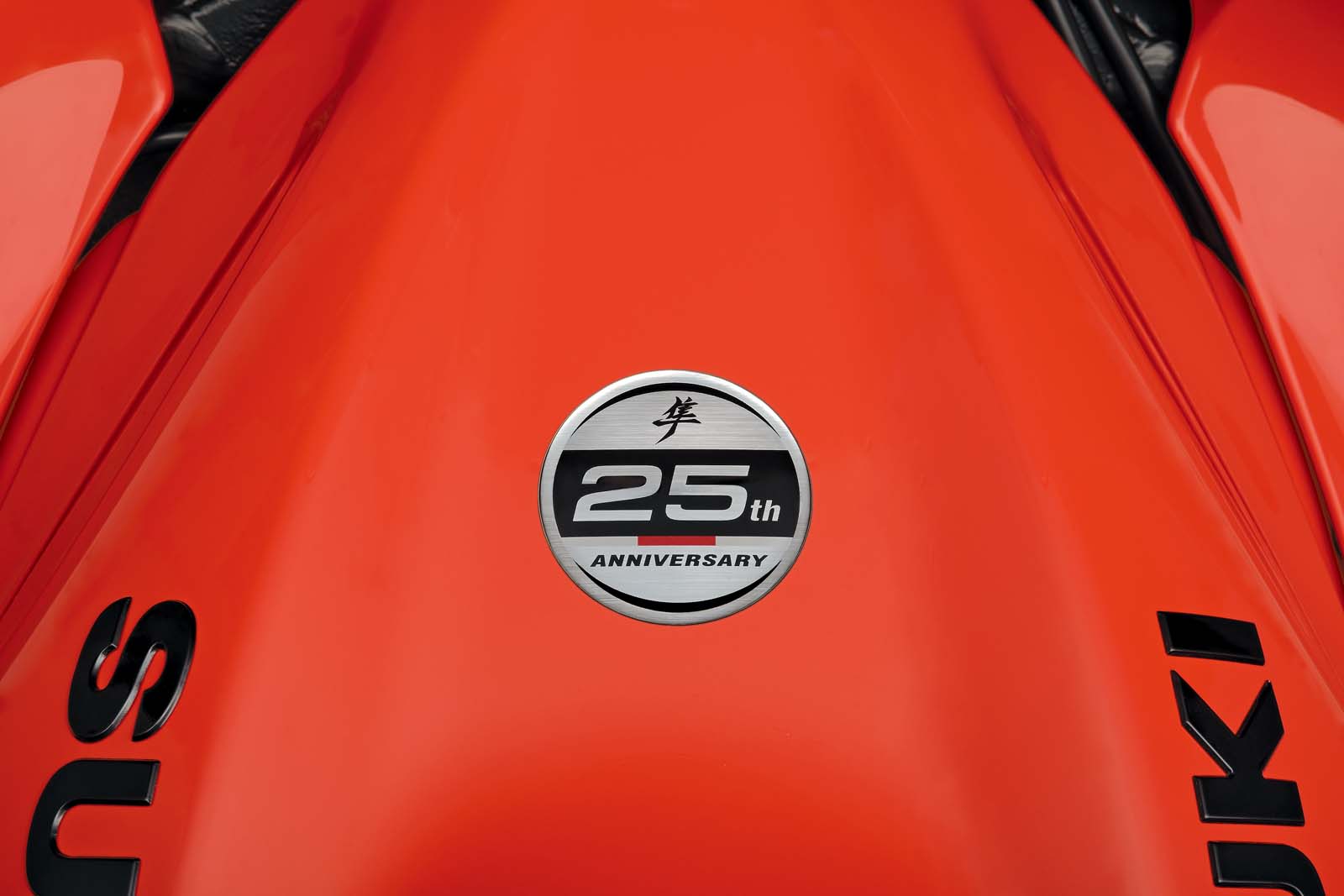
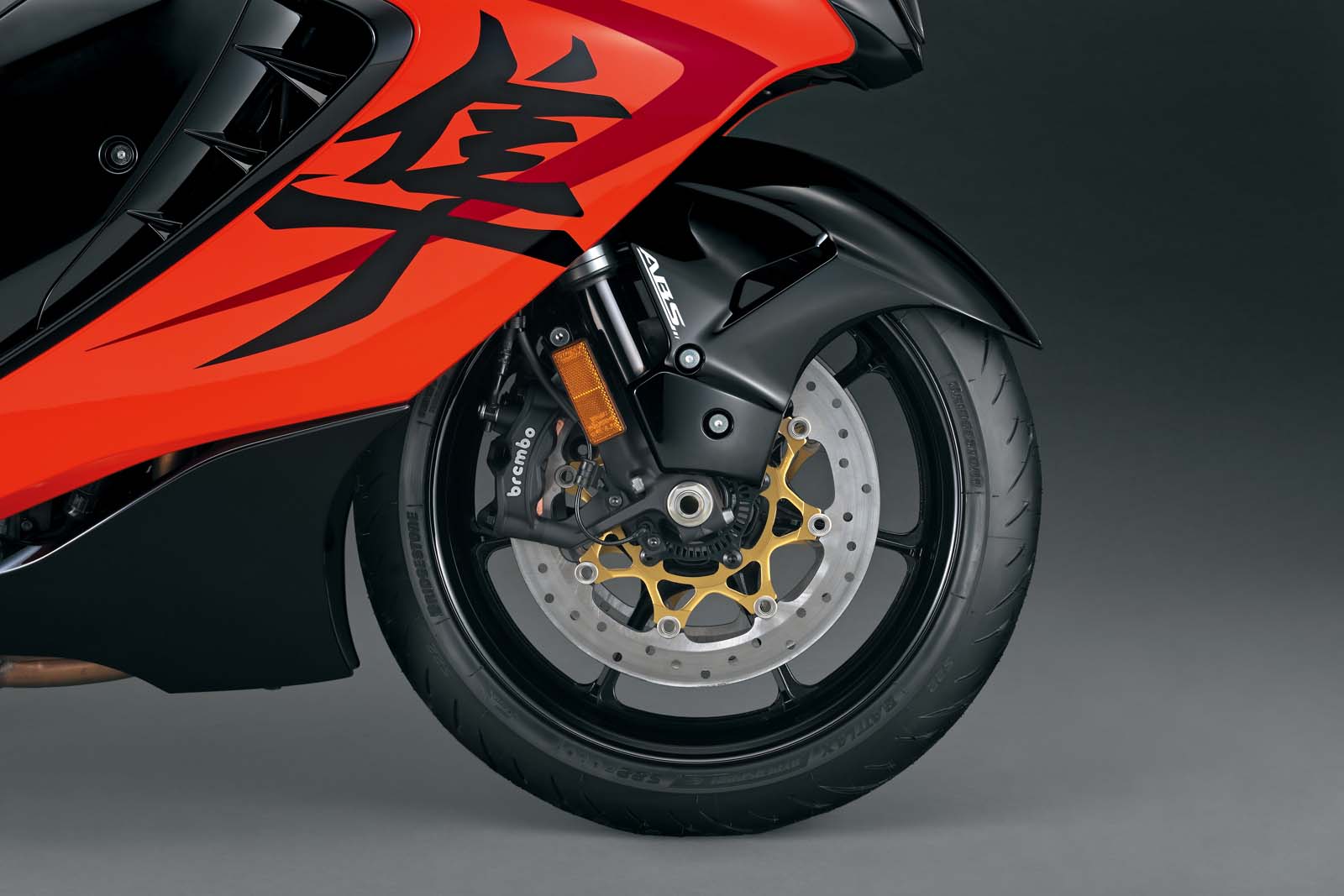
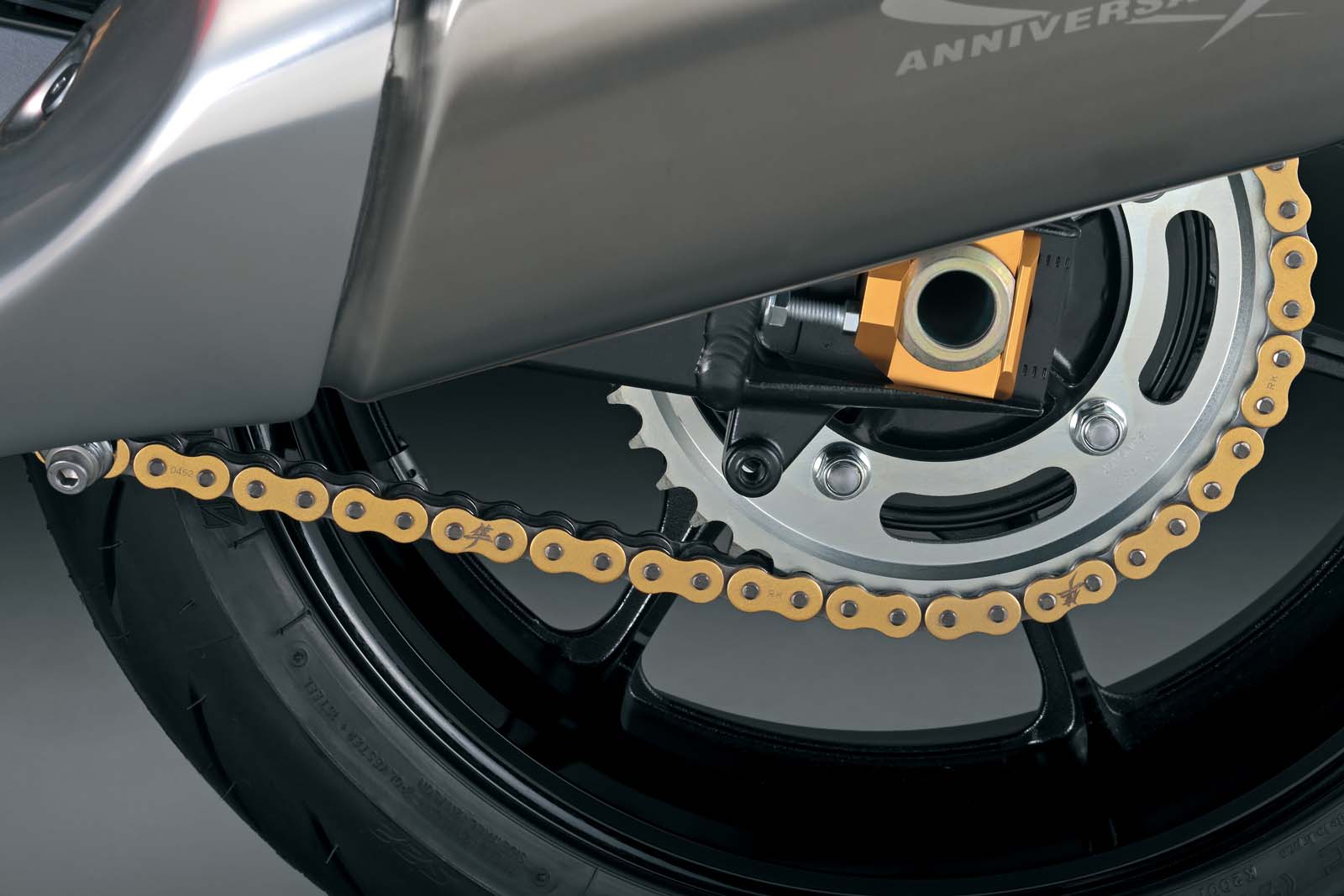
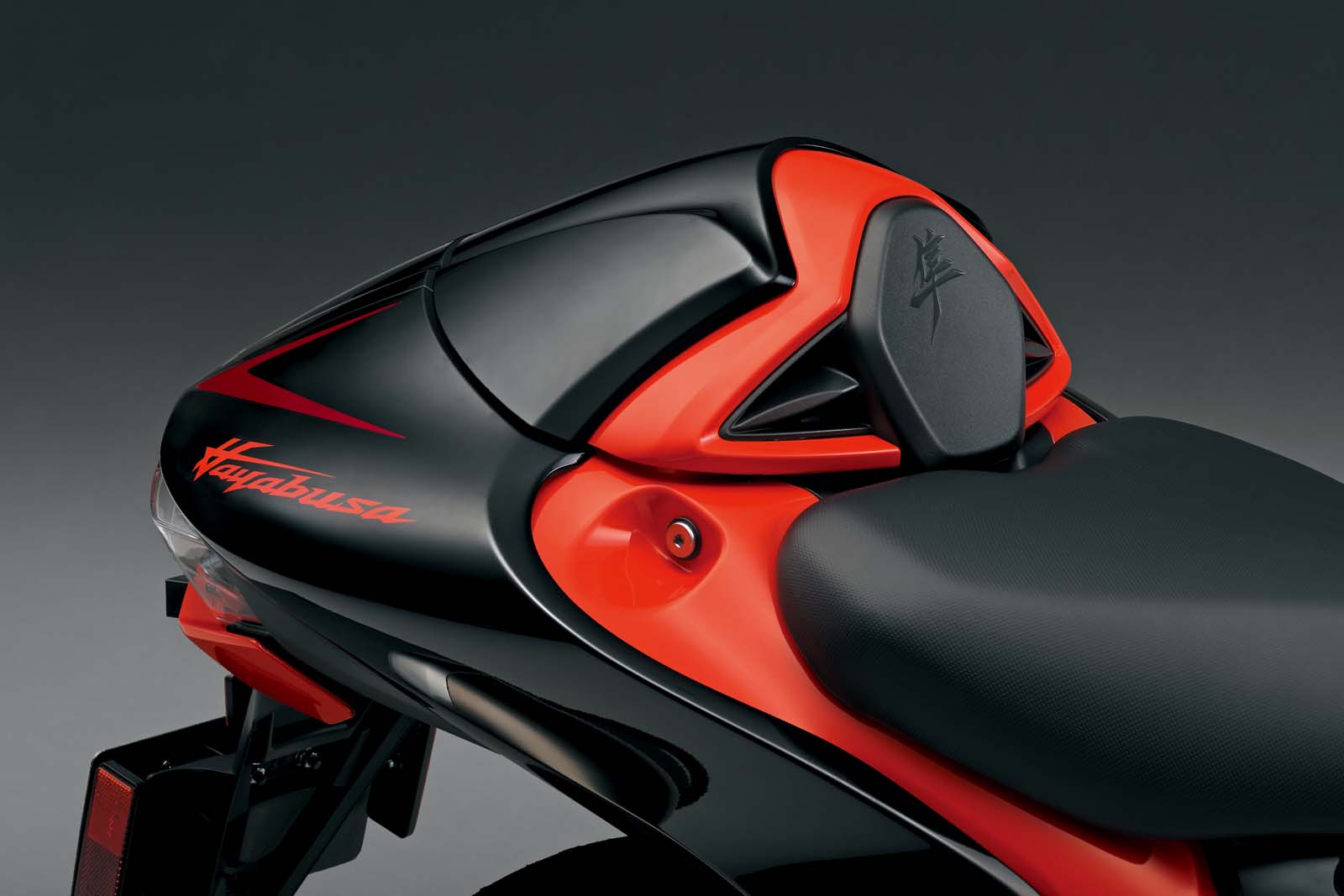
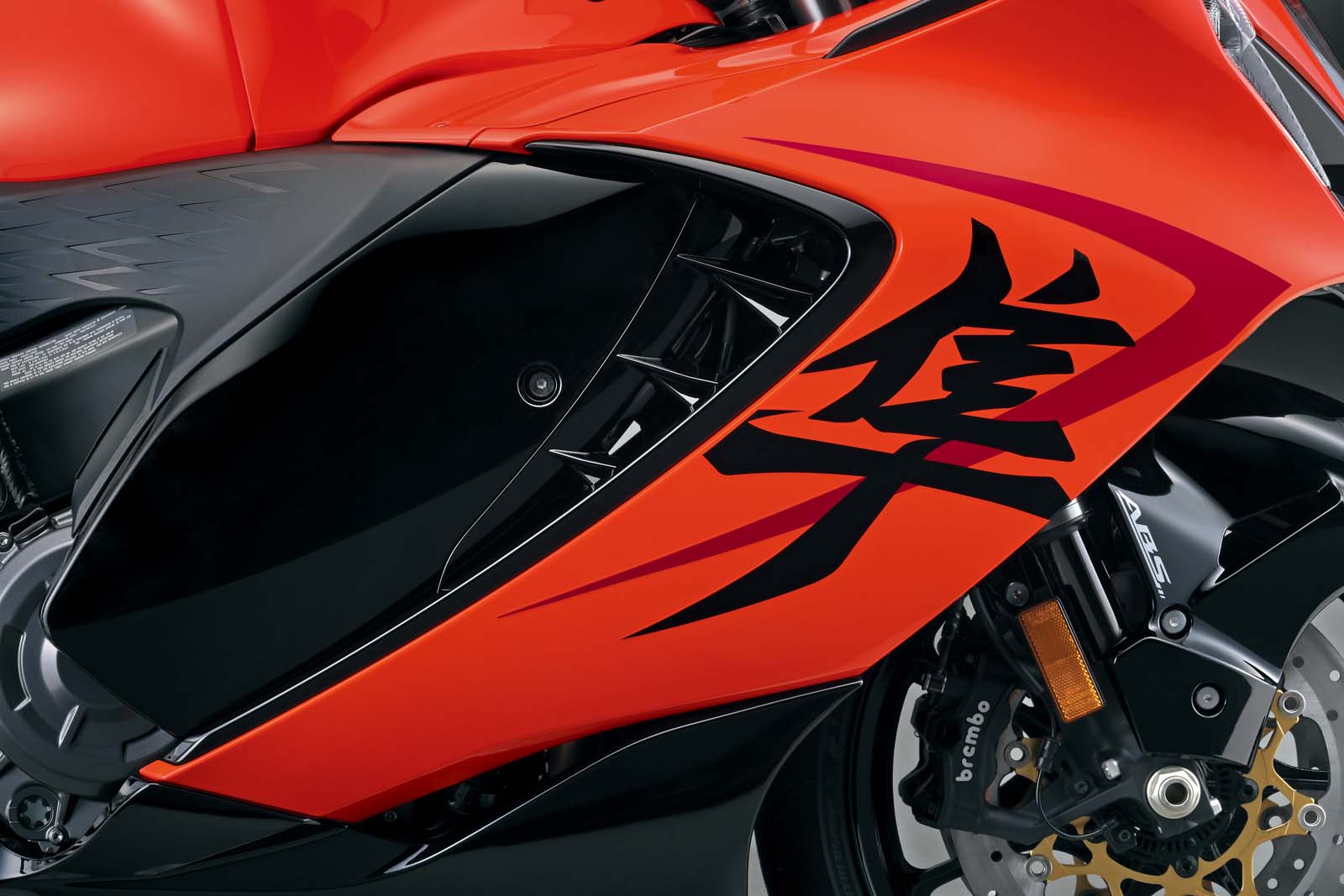
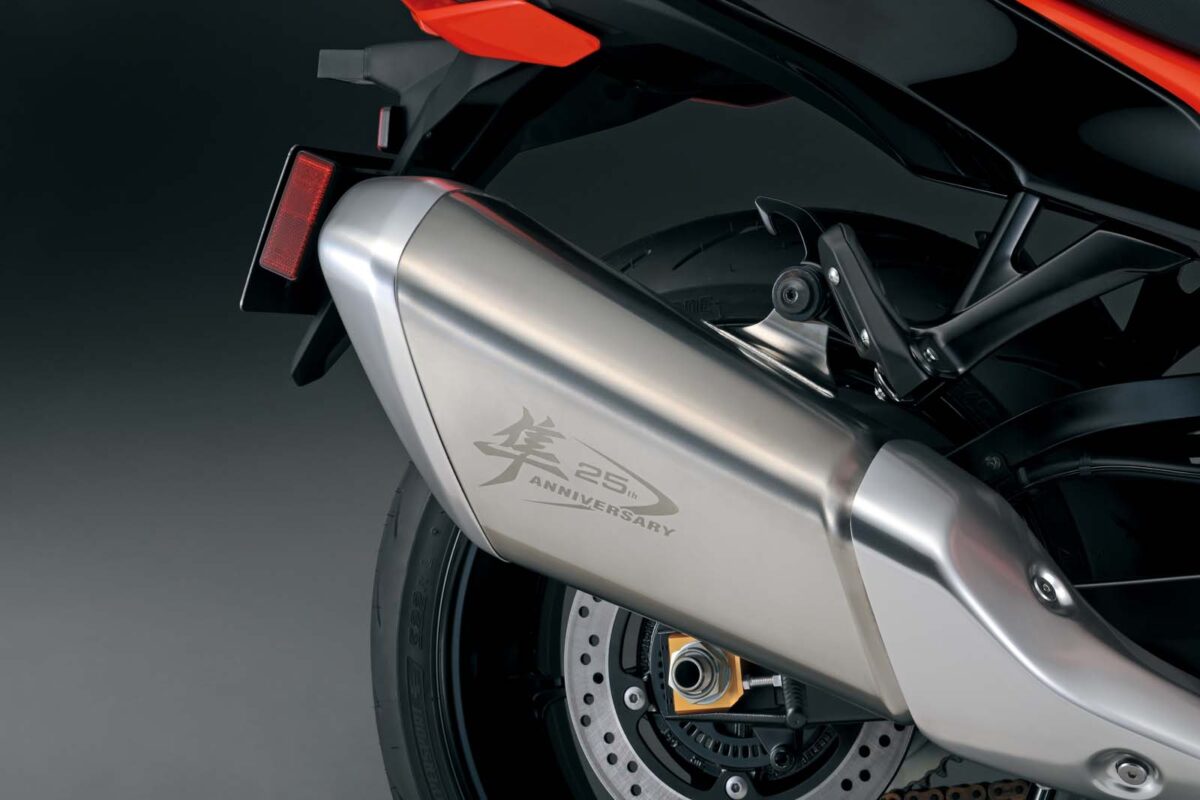
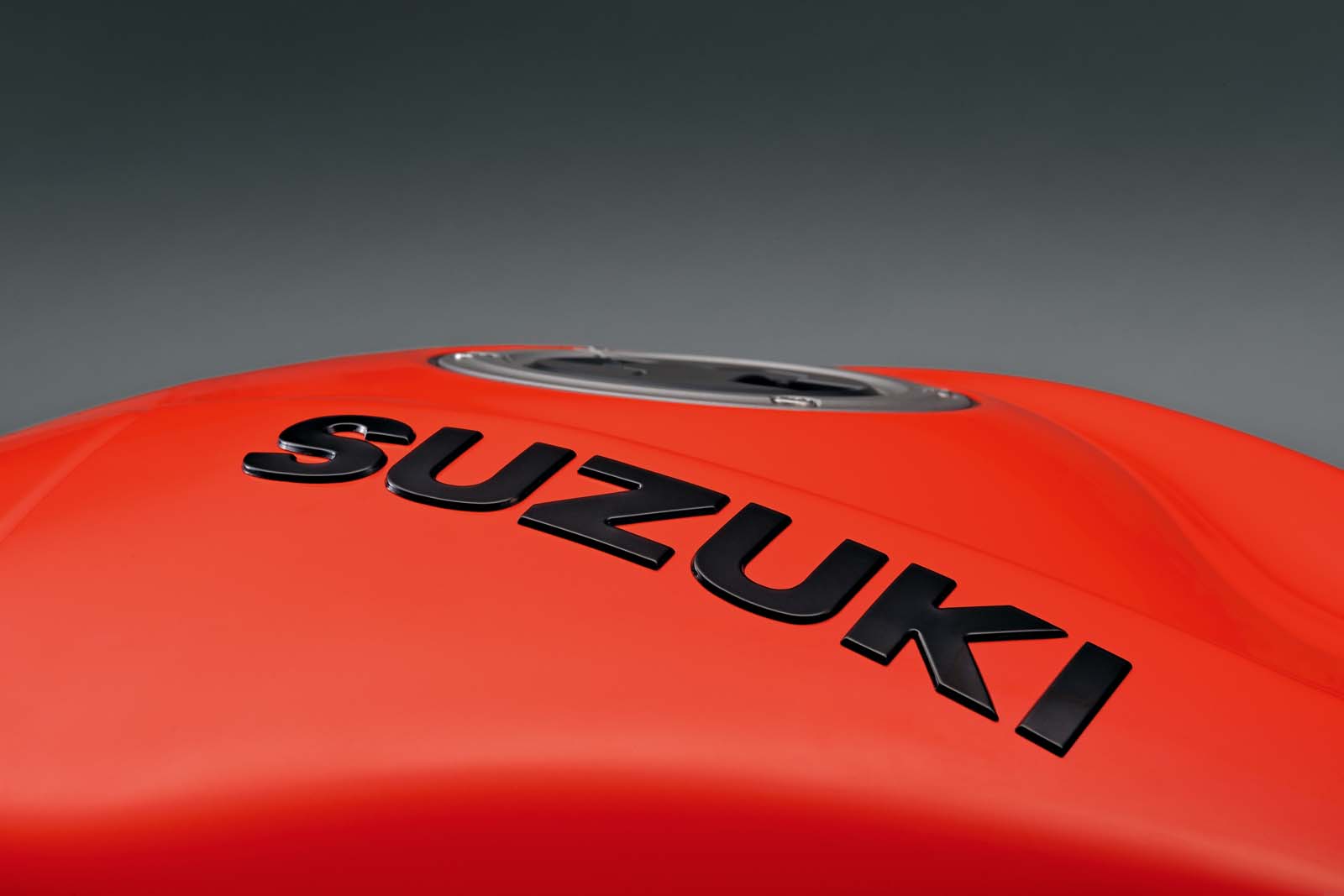
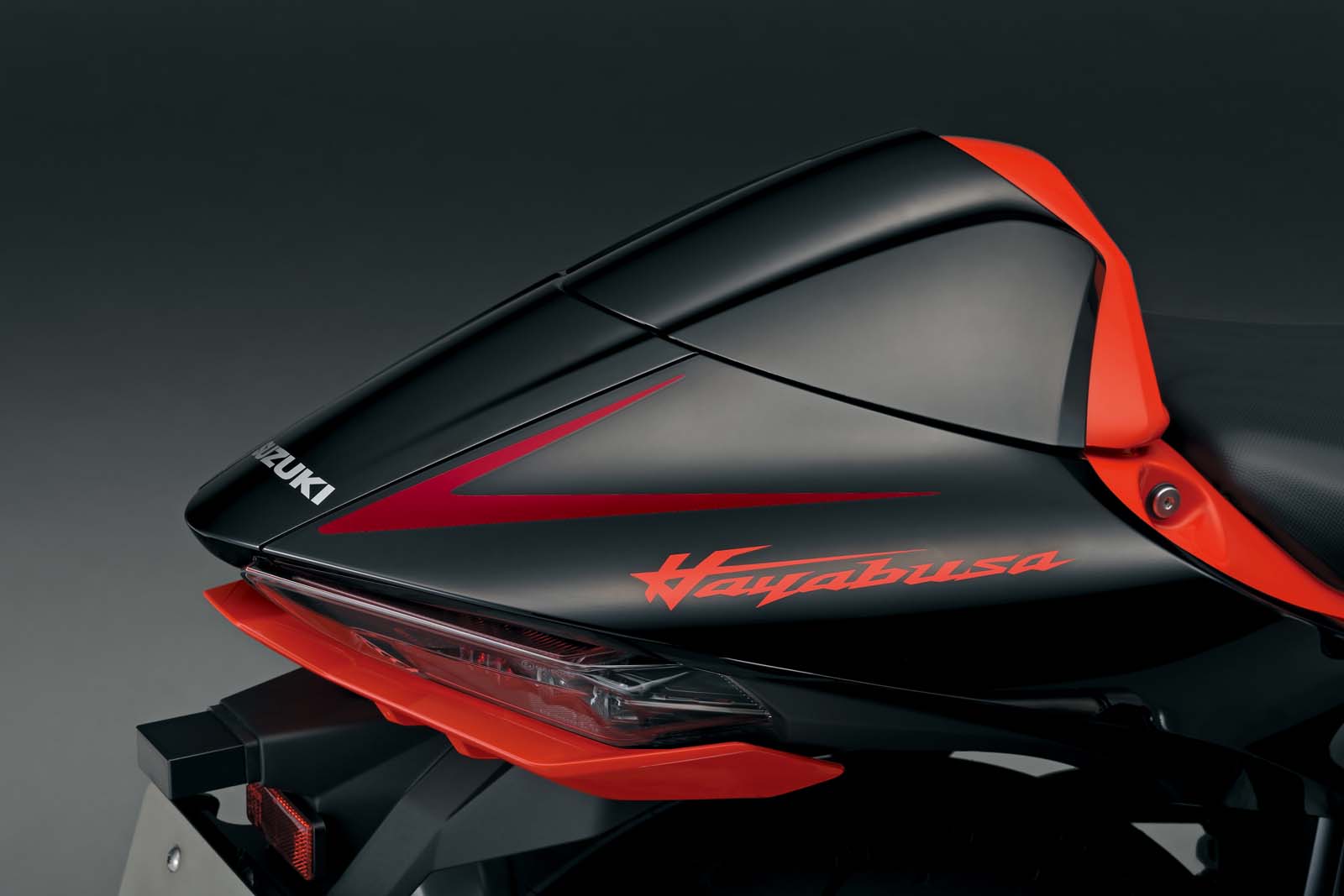
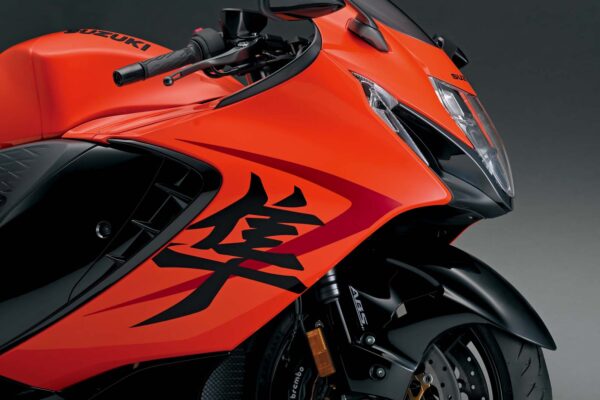
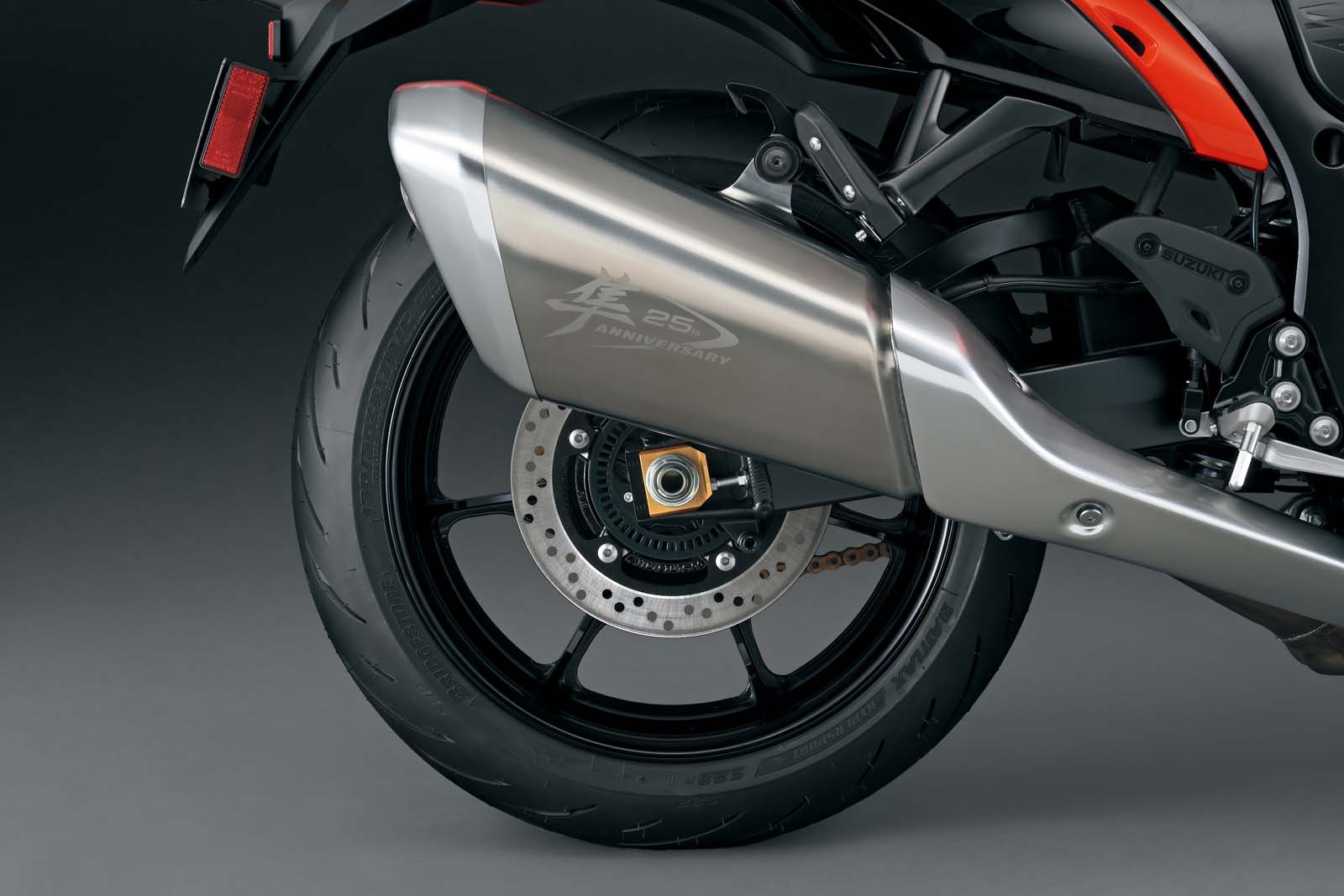
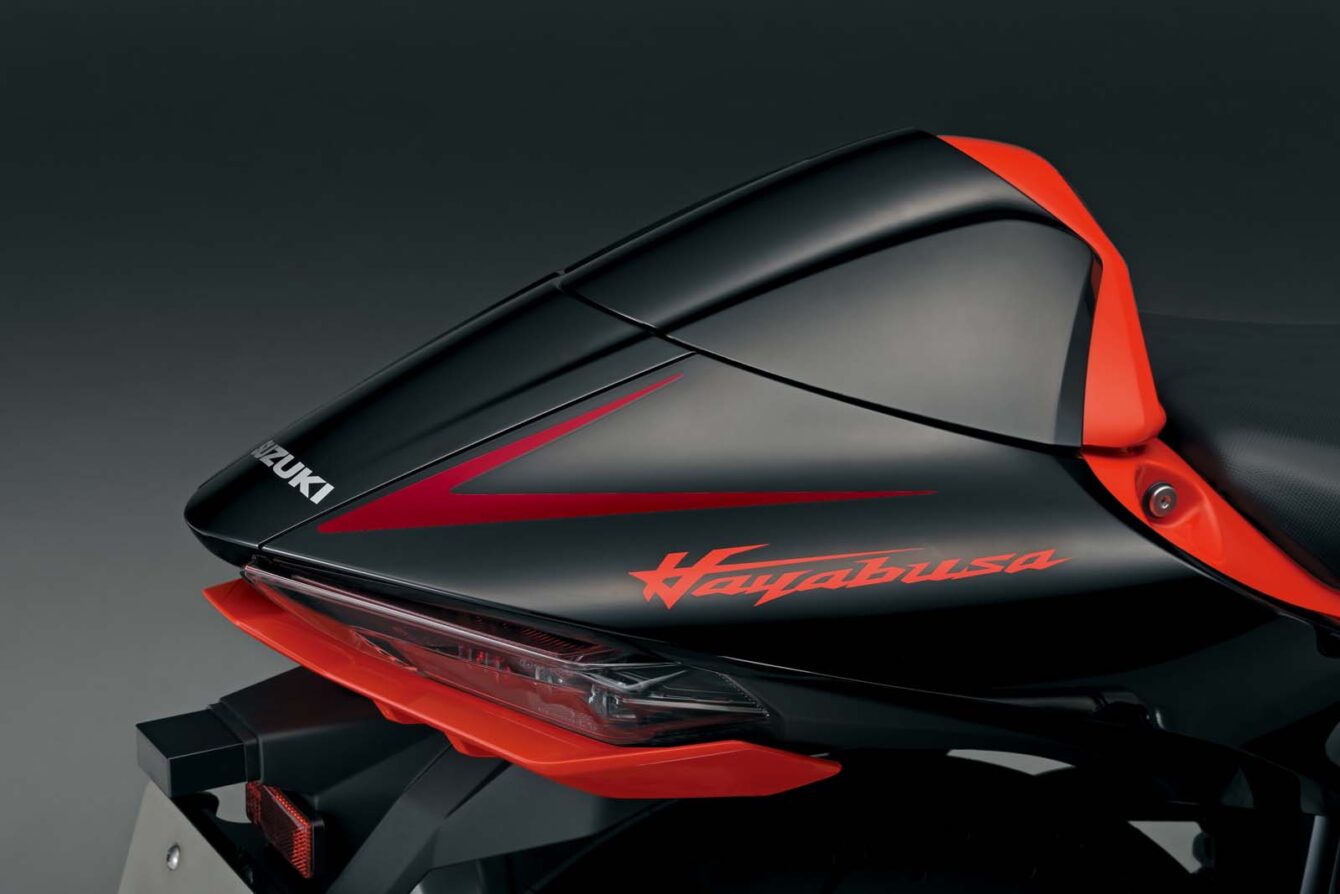
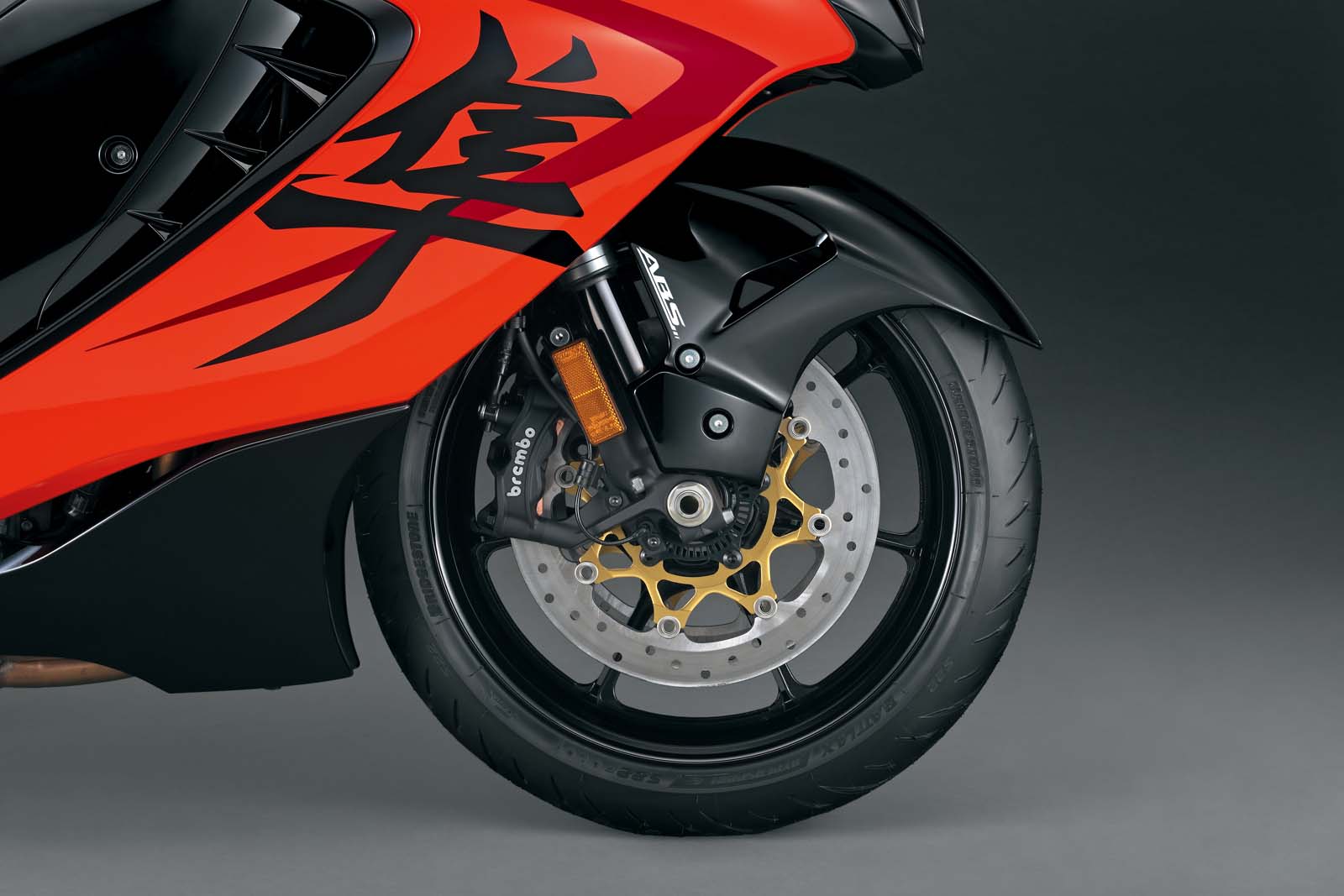
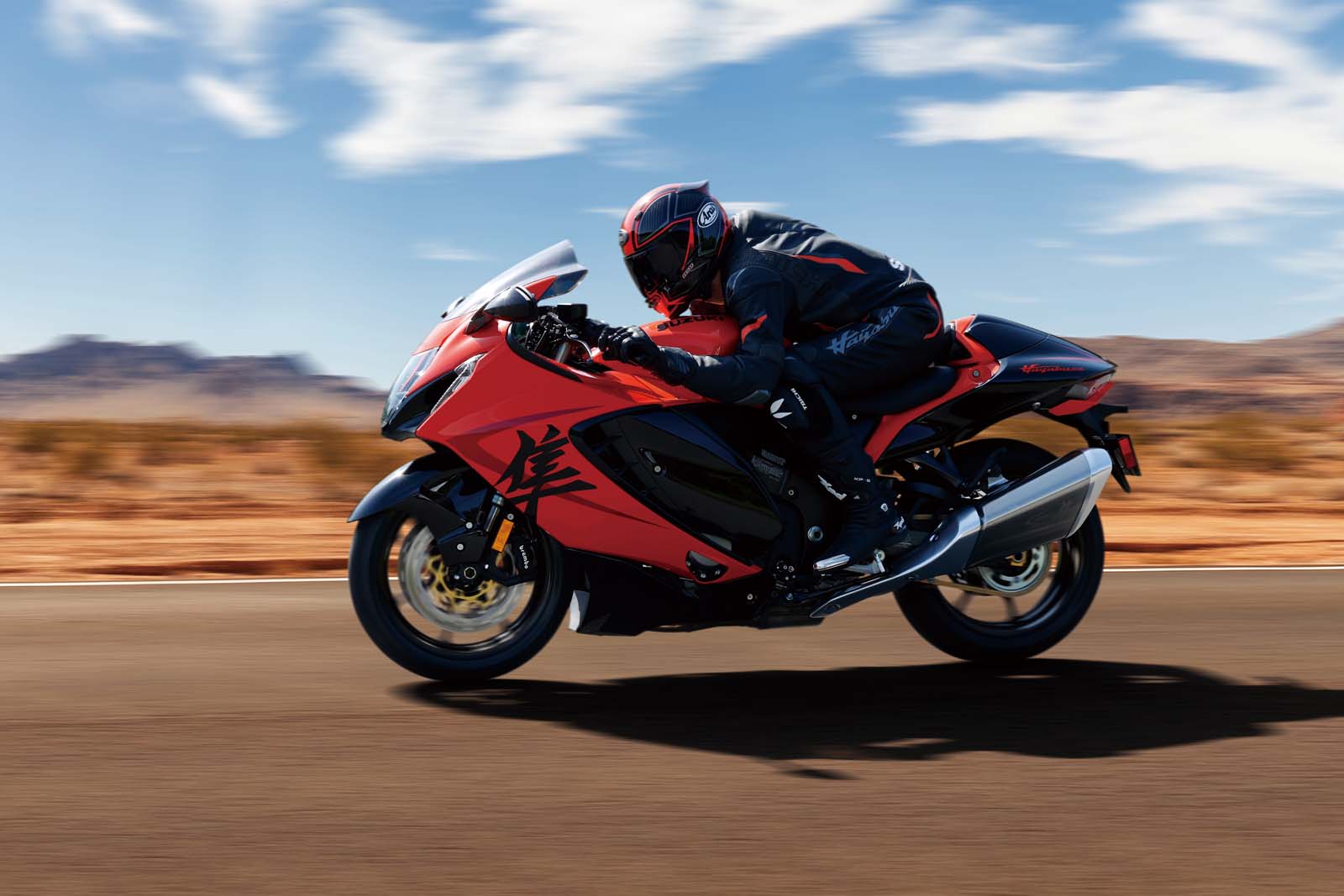
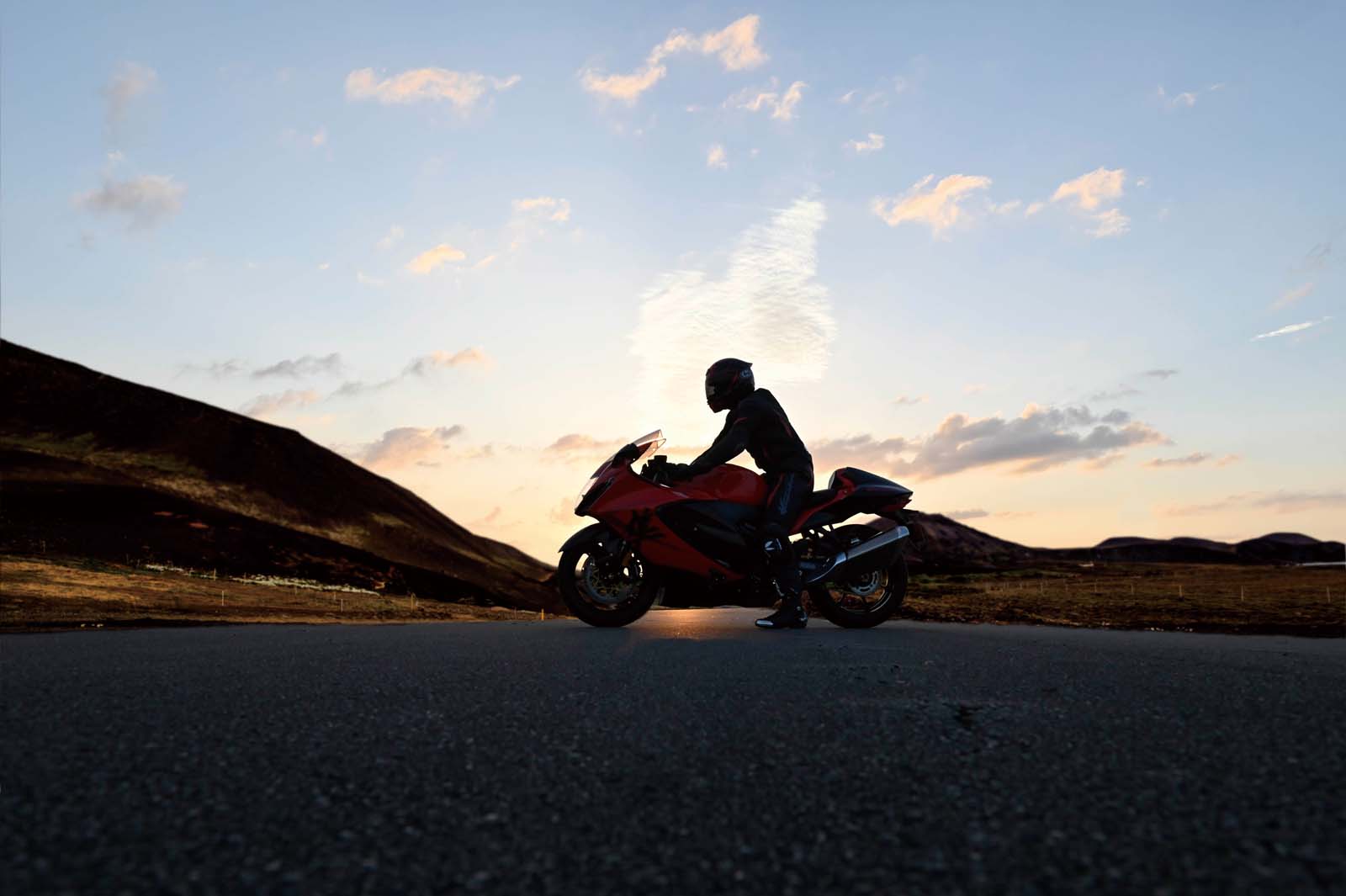
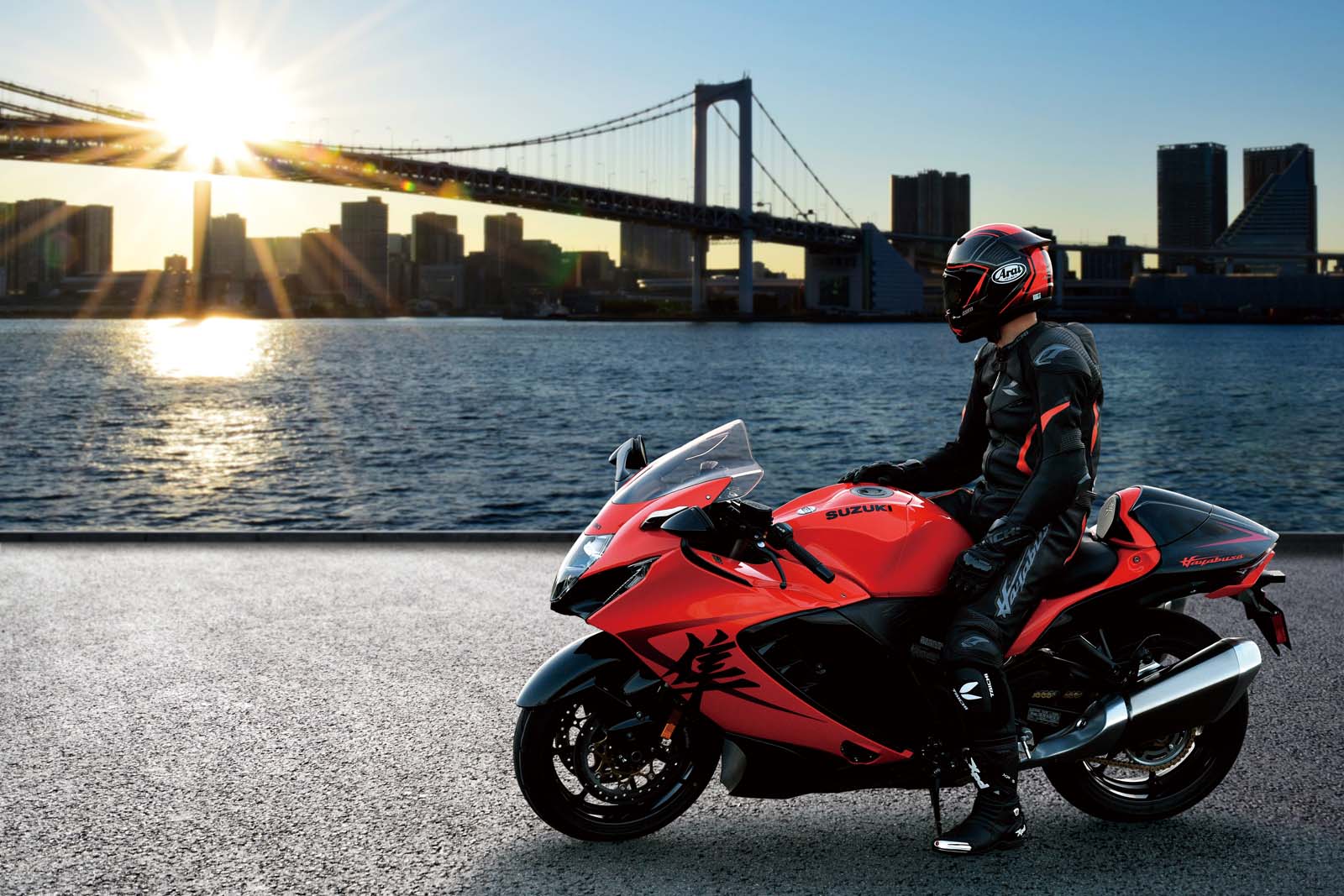
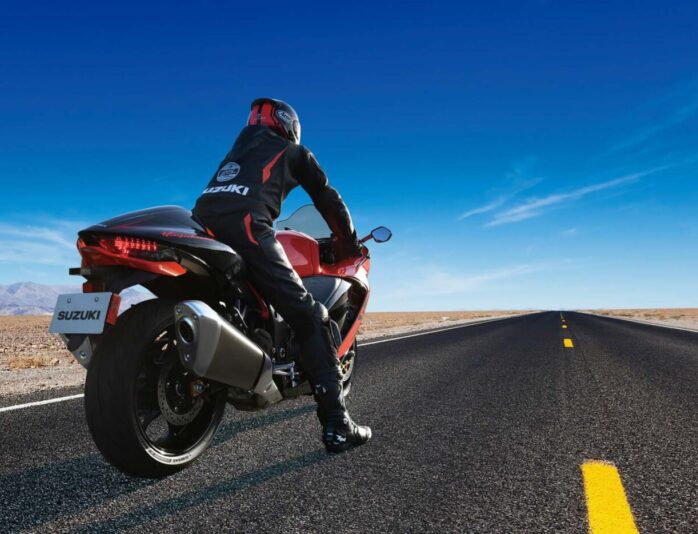
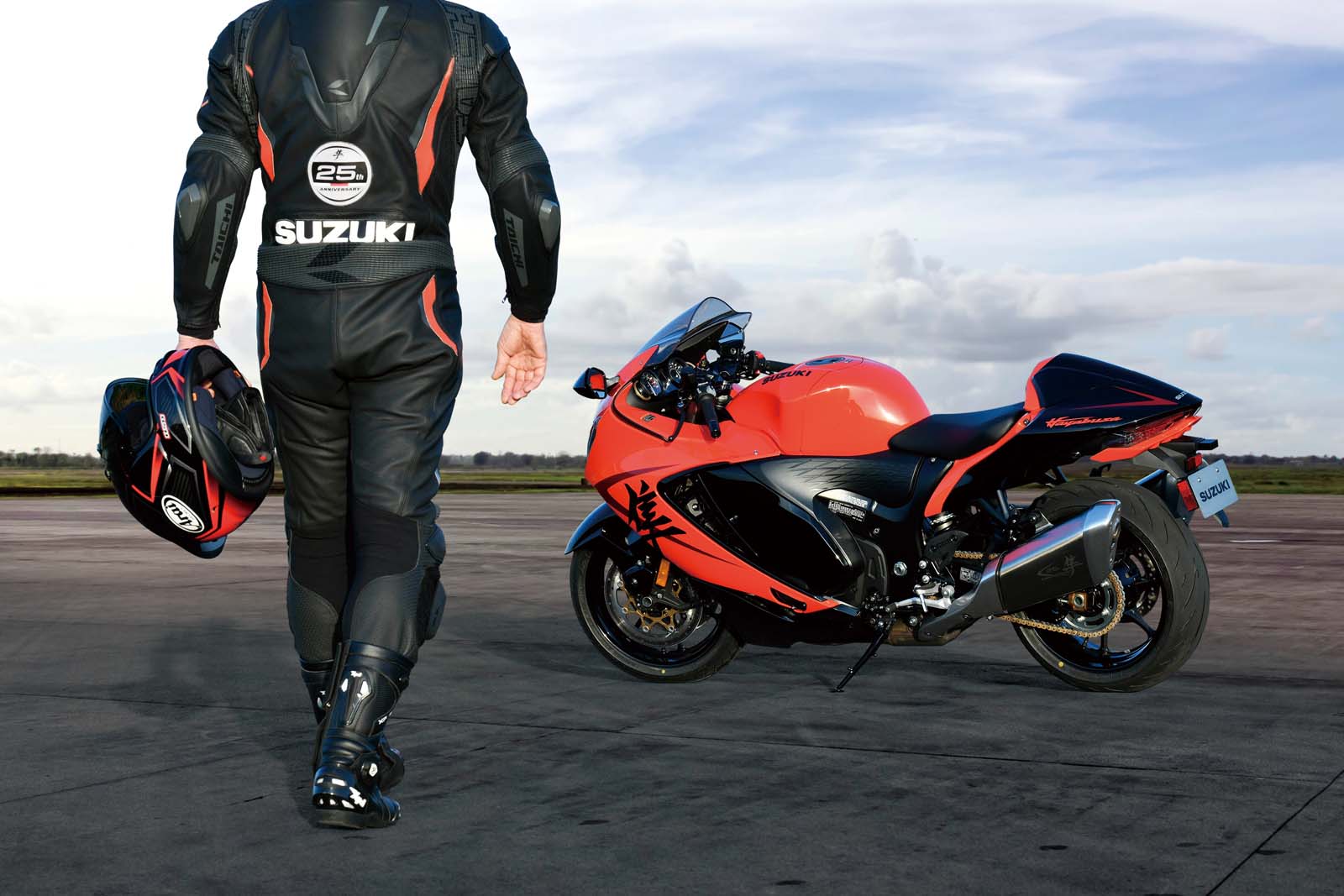
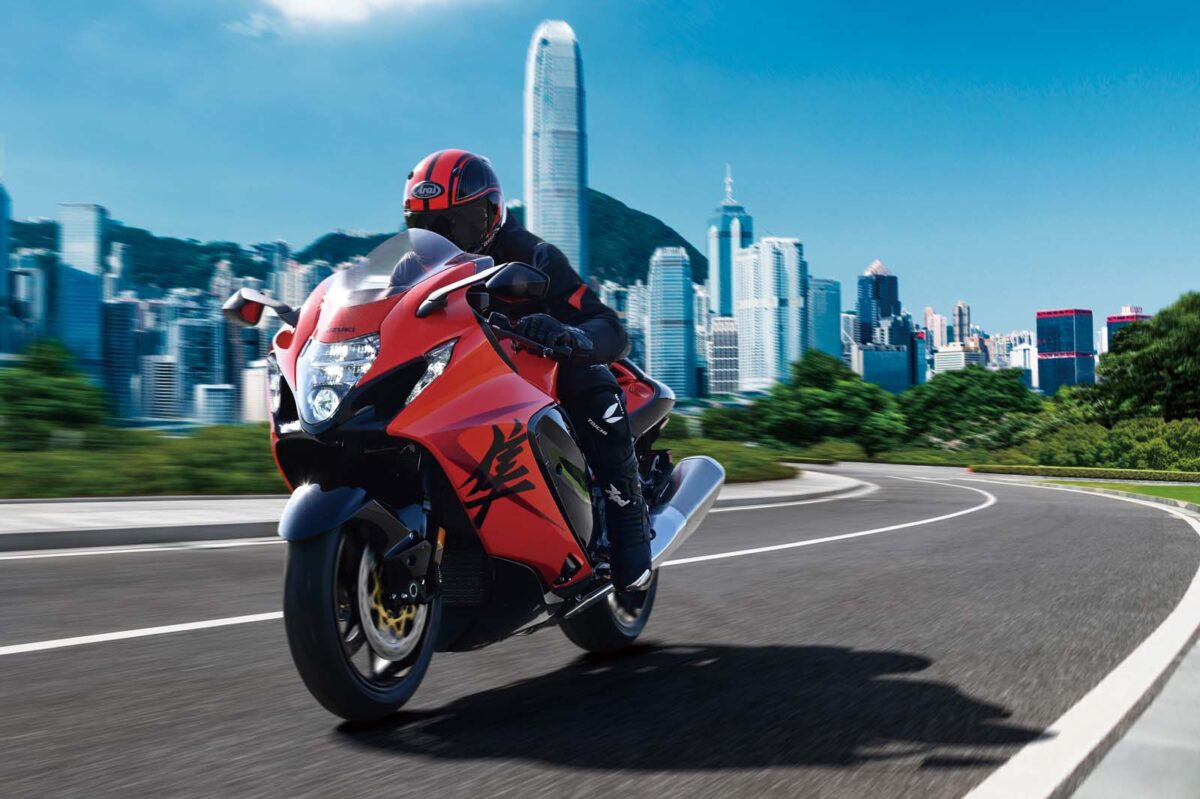
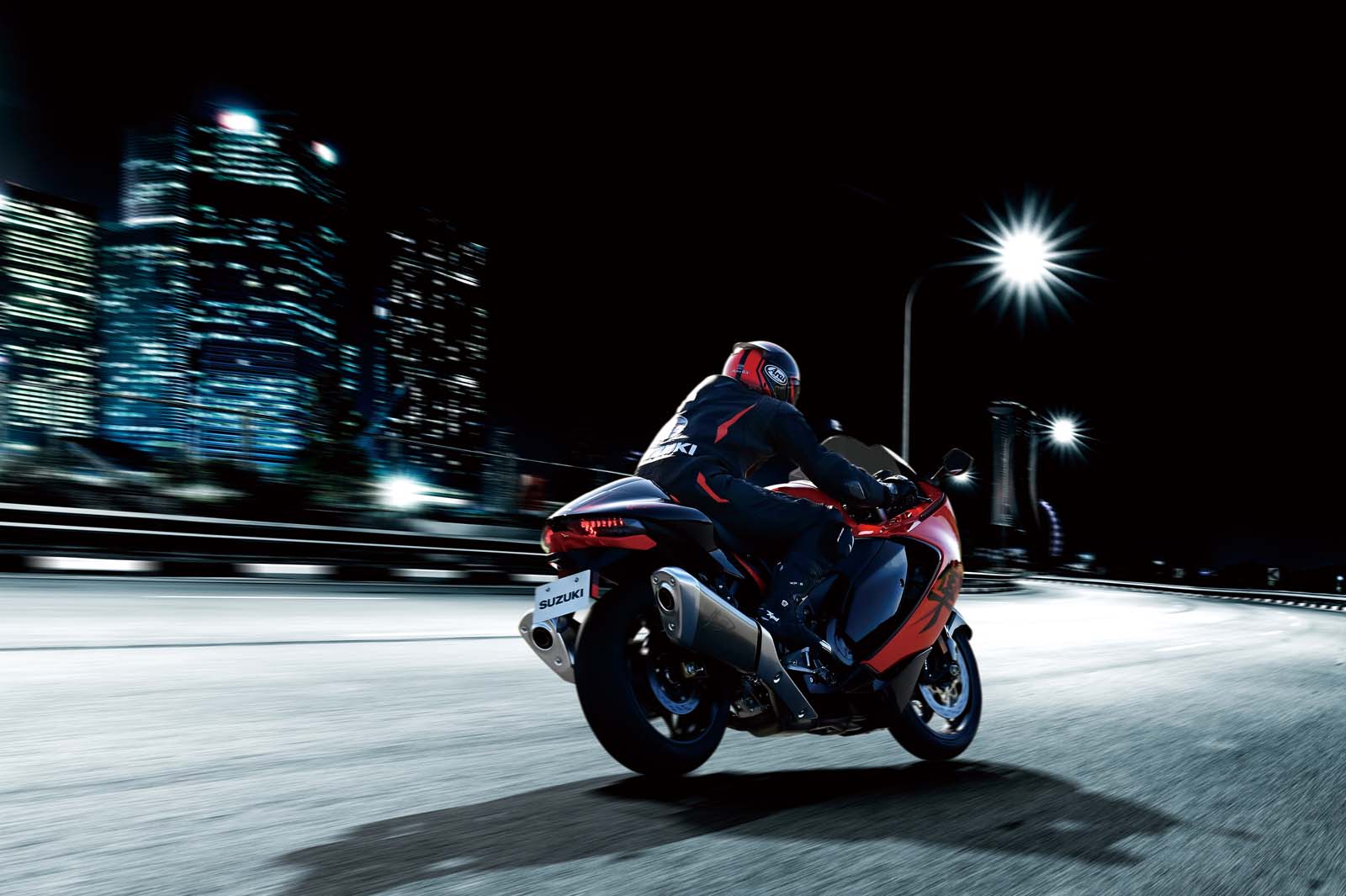
 Forged Pistons
Forged Pistons Revised Cam Profile
Revised Cam Profile